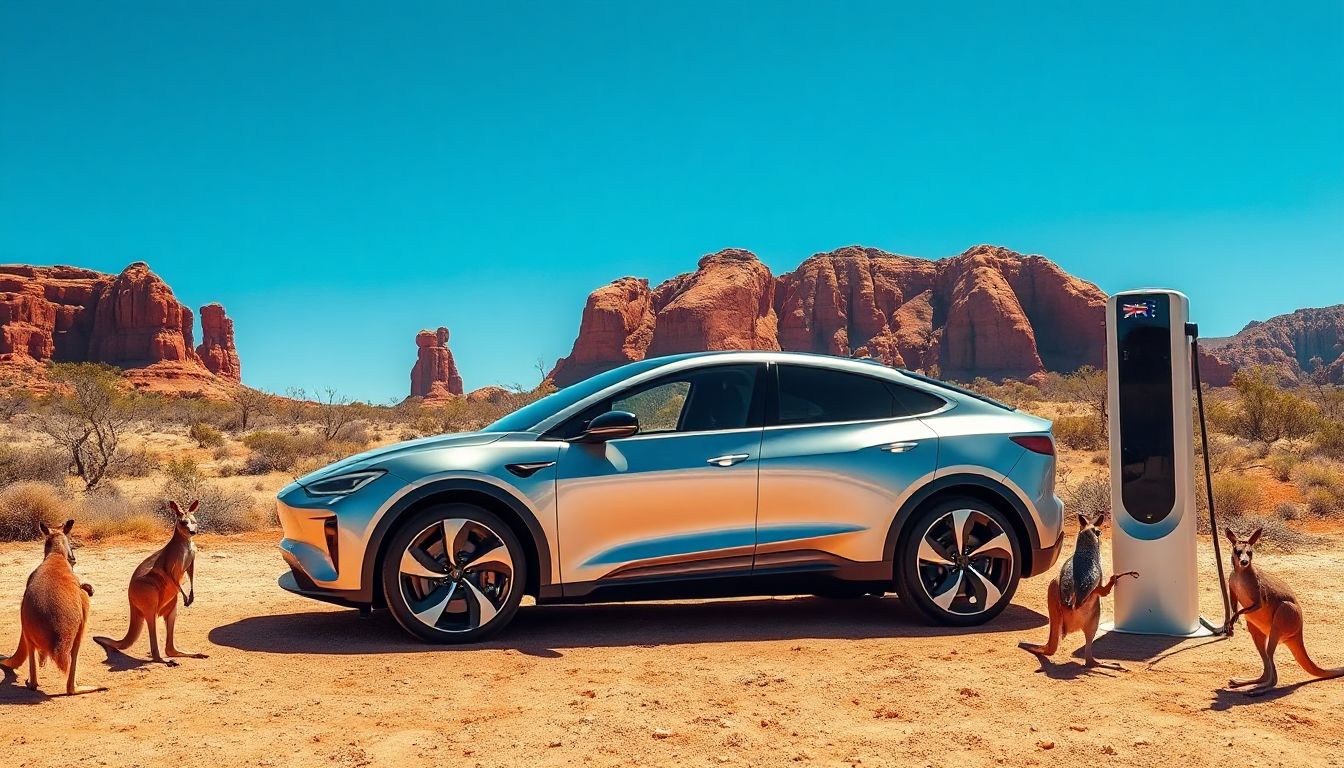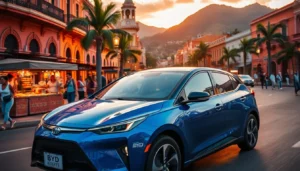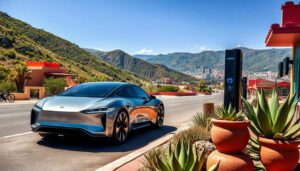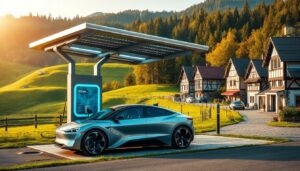Introduction
Electric vehicles (EVs) are becoming more popular in Australia. Everywhere you look, companies and government programs are pushing for less pollution and cleaner roads. Switching to an EV can help reduce your carbon footprint, save you money, and even get you special perks from the government. If you’re thinking about buying an electric car, this guide will walk you through everything you need to know—from choosing the right model to understanding costs and incentives. Get ready to join Australia’s green movement and drive towards a better future.
The Australian EV Market Overview
Current State and Growth Trends
The EV scene in Australia is booming, though it still trails behind other countries. Over the past few years, EV registrations have been climbing steadily. In 2022, EV registrations increased by over 40%, showing more Aussies are making the switch. Rising environmental awareness and new policies are part of the push. More people want quieter, cleaner cars, and governments want to meet climate targets.
Popular Electric Vehicle Models in Australia
Australia has a hot list of EVs that buyers are loving. Tesla’s Model 3 remains a top seller thanks to its range and tech features. Hyundai Ioniq and Kia Soul EV are also popular, especially for their affordability. Nissan Leaf offers an excellent choice for new drivers, with a good balance of price and range. Keep an eye on upcoming models like the Ford Mustang Mach-E and Volkswagen ID.4, which are expected to hit Aussie roads soon.
Government Policies and Incentives
Both federal and state governments offer incentives to make EVs more affordable. These include rebates, tax discounts, and special registration perks. For instance, some states give rebates of up to AUD 3,000 if you buy an EV. The process is simple—just check your eligibility, fill out the forms, and enjoy the savings. These policies are designed to make EVs less expensive and encourage more Aussies to choose electric.
How to Choose the Right Electric Vehicle in Australia
Assessing Your Needs and Budget
First, ask yourself how you travel daily. Do you drive long distances or mostly short trips? Is cargo space a must? Do you need a family-sized car? Your budget matters too. Electric cars can be cheaper to run but may cost more upfront. Think about total costs over the years, including maintenance and charging. Talking to Australian EV owners reveals most are happy to pay a bit more initially if it means lower running costs later.
Understanding EV Specifications
Learn what to look for in an EV. Battery range determines how far you can go before recharging. Many Aussies prefer at least 300 km for daily driving and trips. Charging speed is key—some cars can add 100 km in 15 minutes, which is fast enough for most trips. Power output affects acceleration, and safety features like lane assist or collision warning are standard now. Pay attention to how the vehicle rates in crash tests too.
Comparing Different Types of EVs
There are two main types: Battery Electric Vehicles (BEVs) and Plug-in Hybrid Electric Vehicles (PHEVs). BEVs run solely on batteries, while PHEVs combine gasoline and electric power. If you mainly drive close to home, a BEV might suit you best because it’s cheaper to run. PHEVs work well for longer trips with limited charging options. Think about your daily routine when choosing.
Purchasing Options and Dealerships in Australia
Buying New from Dealerships
Buying from a dealership is straightforward. Expect to negotiate price, ask about warranties, and explore financing plans. Trusted brands like Tesla, Hyundai, and Nissan have authorized dealers throughout Australia. Visiting showrooms gives you a feel for the vehicle and a chance to ask questions. Dealers often have demo days where you can test drive different models.
Considering Used Electric Vehicles
Opting for a used EV can save you thousands. Just like with traditional cars, always check the vehicle’s history and condition. Ensure the battery is in good shape—battery replacement is costly. Some dealers in Australia certify used EVs, giving you extra confidence. This route is perfect if you want an EV but are on a tight budget.
Online Platforms and EV Sales Marketplaces
Websites like Carsales, Drive, and EV-specific marketplaces make shopping easy. You can compare prices, read reviews, and check vehicle history all in one place. Always verify the seller’s credibility and ask for maintenance records. Many online sellers offer vehicle inspections or warranties, making remote buying less risky.
Charging Infrastructure and Ownership Costs
Home Charging Solutions
Installing a home charger makes charging simple and low-cost. Level 1 chargers plug into regular power outlets but are slow. Level 2 chargers are faster and worth the investment for daily convenience. Costs vary from AUD 1,000 to AUD 2,500 for installation, depending on your home setup. With a home charger, you’ll be charging overnight, waking up to a full battery every morning.
Public Charging Networks in Australia
Public chargers help on long trips or when you’re away from home. Major networks include ChargeFox, Tesla Superchargers, and Evie Networks. Australia is expanding its network rapidly, but coverage isn’t everywhere yet. Planning trips with charging stations in mind is smart—especially for highway drives. Apps like PlugShare can help locate chargers and confirm availability.
Ongoing Expenses and Maintenance
EVs cost less to run than traditional cars. Electricty is cheaper than fuel—saving hundreds annually. Maintenance needs are fewer too—no oil changes, fewer moving parts. Battery life is a key concern, but most batteries last 8-10 years or longer. Warranties often cover the battery for up to 8 years, giving peace of mind.
Practical Tips for Buying an EV in Australia
Step-by-Step Buying Checklist
- Research your needs and set your budget.
- Test drive multiple models to see what feels right.
- Inspect used EVs thoroughly if buying second-hand.
- Secure financing or check dealer offers.
- Gather necessary documents and complete paperwork.
- Enjoy your new EV and start planning your charging routine.
Leveraging Incentives and Rebates
Maximize what you get by checking eligibility for rebates and discounts. Fill out all applications correctly to avoid missing out. Sometimes, your local council or state offers extra perks like free parking or access to carpool lanes. Keep these benefits in mind—they boost your savings and convenience.
Future Trends and Innovations
The EV scene in Australia is just warming up. Expect more advanced models with longer ranges and faster charging. Infrastructure improvements are happening quickly, making long trips easier. Technologies like solid-state batteries are on the horizon, promising shorter charging times and longer battery life. Future-proofing might mean choosing a model with upgrade options or compatibility with upcoming tech.
Conclusion
Buying an electric vehicle in Australia makes sense for many reasons. It’s good for the environment, saves money in the long run, and can give you access to special perks. Whether you’re first-time buyer or upgrading your current ride, the options are growing fast. Do your research, consider your needs, and take advantage of incentives. Now’s the time to join Australia’s clean transport future—start exploring your EV options today. The roads are calling!




